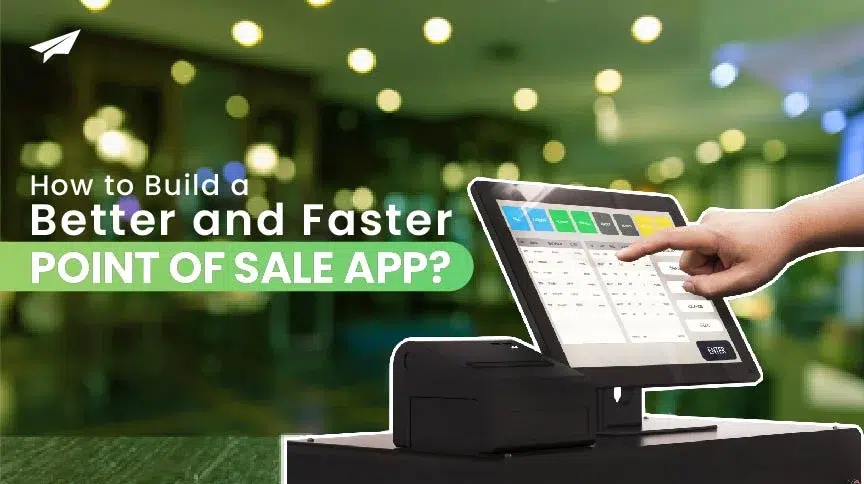How to build a better & faster Point of Sale App?
According to a research article, over 50% of respondents don’t buy from a brand after a bad experience.
Thanks to third-party app support, the Point of Sale App offers brick-and-mortar retailers flexibility and customization.
With apps, retailers can efficiently address in-store and omnichannel tasks, enhancing the overall merchant experience.
Unlike traditional POS systems, apps take center stage in the POS experience, enabling seamless workflow customization to meet any business requirement.
But what exactly makes a POS app better and faster? In this guide with Tekglide, explore the key factors and strategies for building a top-notch POS app that delivers premium quality performance and user experience.
What Are POS Apps?
Before plunging into the nitty gritty of how to build a better and faster POS app, let’s first grasp the notion of what POS apps are and why they are essential for mid-market merchants.
POS apps, also known as Point of Sale apps, are software solutions designed to enable transactions and manage diverse aspects of retail operations, such as inventory management, customer relationship management, sales reporting, and more.
These apps run on portable devices, such as tablets or smartphones. Mid-market merchants use them to process sales, accept payments, and provide a whole personalized customer service.
What type of businesses should have a Point of Sale system?
Point of sale systems can be used by retail stores, hospitality businesses, service-based businesses, or any business that conducts face-to-face transactions with customers. They are essential for tracking inventory and sales data, offering multiple payment options for customer convenience, and aiming to improve operational efficiency and customer service.
Here are some well-known brands across various industries that utilize point of sale systems:
- In their stores, Apple uses a custom POS app on iPads for a sleek and efficient checkout experience.
- Starbucks leverages a mobile POS app to allow baristas to take orders and payments at tables, speeding up service.
- Panera Bread uses a cloud-based POS system for efficient order processing and integration with its loyalty program.
- Salons by JC Penney utilize a POS system specifically designed for the salon industry. This system allows for appointment scheduling, service management, and product sales.

Best Practices to implement for Point of Sale Apps
Building a better and faster POS app requires focusing on both efficiency and user experience. Here are some key areas you can explore while creating Point of Sale Apps:
- Design & develop POS apps based on data-driven insights
The focus should be on crafting a user-friendly interface that streamlines daily operations. Prioritize mobile optimization, ensuring larger buttons and intuitive navigation.
Collaborate with Tekglide’s proficient developers and designers to design a customized POS application that delivers a seamless user experience.
Tip: You can improve checkout further by implementing features like barcode scanning and product search.
- Optimize the checkout
Customers value time and tend to get impatient if the checkout process takes too long. As a mid-market merchant, you can optimize that process using barcode scanning instead of manual entry.
Many POS solutions integrate extensive inventory management and barcode scanning functions to eliminate manual data entry and inventory errors. It’s an effective way to reduce checkout time and create a quick POS app for customers.
- Add rewards and loyalty programs
Loyalty programs are an effective method to enhance customer retention by incentivizing higher spending and encouraging repeat purchases.
Integrating such programs can distinguish your POS app from competitors. Studies have reported that customers buying from loyalty programs tend to spend 37% more than regular customers.
- Multiple payment methods
To satisfy customers, mid-market merchants need to understand their needs, including how they want to pay. You’ll never know how many sales opportunities you’ll miss if you don’t meet your customers’ preferred payment methods.
A POS app can incorporate new forms of payment, like:
- Cash
- Credit and debit cards
- Mobile wallet and e-wallet payments
- Gift card
- Buy Now, Pay Later
- QR Code
- Contactless or touchless payments
- Mobile payments like Apple Pay, Google Pay, and Samsung Pay
Electronic payment methods offer more than just convenience. They deliver a fast-paced POS experience, eliminating the need for customers to search for their wallets to choose a suitable payment method. This efficiency speeds up the transaction process and enhances the shopping experience.
Benefits of creating POS experience
Creating a POS app experience comes with several benefits, including running tasks more efficiently by automating areas like sales reporting and inventory management. This saves time for employees to focus on other tasks. POS apps provide businesses with valuable sales information that can be used to make informed decisions.
POS apps streamline operations and enhance customer service. By tracking customer purchase history and preferences, you can personalize their experience. Furthermore, POS systems are equipped with password protection and data encryption, ensuring the utmost security of sensitive information.
A POS app can offer several features that improve the customer experience, so hire our app developers and designers to build your app and help you create an agile POS experience for your customers.
Conclusion
In conclusion, building a better and faster Point of Sale app requires careful attention to user experience, functionality, and optimization. Businesses can enhance efficiency and customer satisfaction by prioritizing user-friendly interfaces, seamless navigation, and mobile optimization. Collaborating with experienced developers and designers at Tekglide ensures tailored solutions that streamline operations and drive growth.







